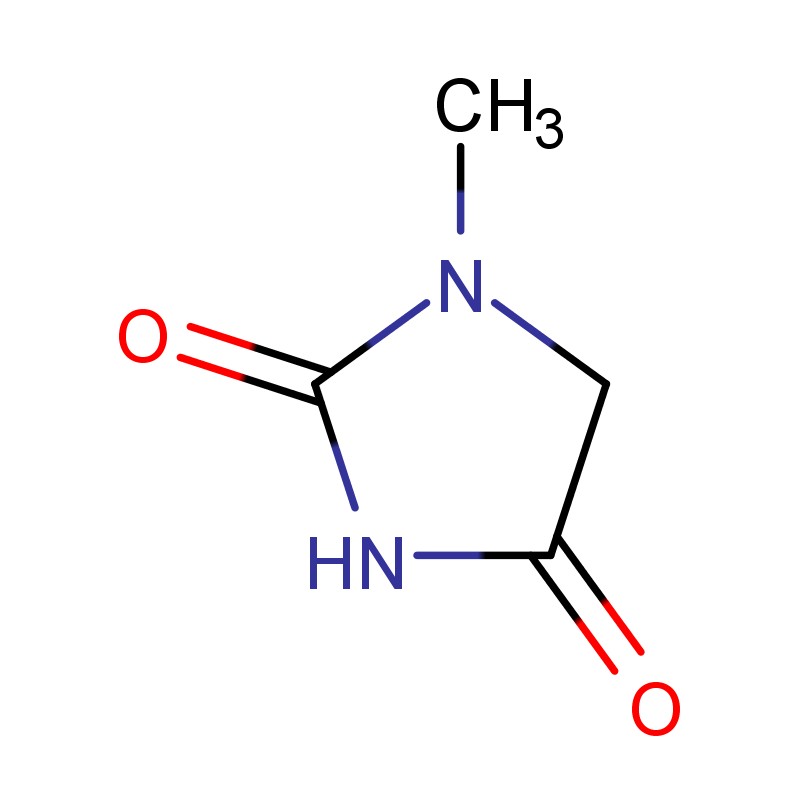
- English
- Español
- Português
- русский
- Français
- 日本語
- Deutsch
- tiếng Việt
- Italiano
- Nederlands
- ภาษาไทย
- Polski
- 한국어
- Svenska
- magyar
- Malay
- বাংলা ভাষার
- Dansk
- Suomi
- हिन्दी
- Pilipino
- Türkçe
- Gaeilge
- العربية
- Indonesia
- Norsk
- تمل
- český
- ελληνικά
- український
- Javanese
- فارسی
- தமிழ்
- తెలుగు
- नेपाली
- Burmese
- български
- ລາວ
- Latine
- Қазақша
- Euskal
- Azərbaycan
- Slovenský jazyk
- Македонски
- Lietuvos
- Eesti Keel
- Română
- Slovenski
- मराठी
- Srpski језик
How Does 1-Methylhydantoin Shape Industrial Applications?
2025-09-24
1-Methylhydantoin is a heterocyclic organic compound that belongs to the hydantoin family. It is characterized by a stable five-membered ring containing nitrogen, oxygen, and carbon, which grants it versatility in industrial and pharmaceutical applications. Its chemical formula is C4H6N2O2, and it is also referred to as N-methylhydantoin. Known for its high chemical stability, good solubility, and reliable reactivity, this compound is widely used as an intermediate in multiple industries.
From a chemical perspective, the compound presents a crystalline structure with a relatively high melting point, making it stable under varying conditions. This stability makes it valuable for formulations requiring both durability and safety in processing. Its role as a building block in complex chemical reactions highlights its growing relevance in modern industrial chemistry.
Key Product Parameters of 1-Methylhydantoin
To understand its commercial and technical appeal, let’s explore its core parameters:
| Parameter | Details |
|---|---|
| Chemical Formula | C4H6N2O2 |
| Molecular Weight | 114.10 g/mol |
| Appearance | White crystalline powder |
| Melting Point | 150 – 152 °C |
| Solubility | Soluble in water and ethanol |
| Stability | Chemically stable under standard storage conditions |
| CAS Number | 616-04-6 |
| Common Synonym | N-Methylhydantoin |
These properties not only define its chemical identity but also indicate why industries continue to rely on 1-Methylhydantoin as a dependable intermediate.
How Is 1-Methylhydantoin Used Across Industries?
The versatility of 1-Methylhydantoin lies in its compatibility with multiple sectors. It plays a critical role in the development of pharmaceutical intermediates, specialty chemicals, and even coatings.
Pharmaceutical Applications
-
Intermediate in Drug Synthesis: Many pharmaceutical formulations use 1-Methylhydantoin as a precursor for producing compounds with antibacterial, antiviral, and antitumor properties.
-
Metabolic Stability Enhancer: Hydantoin derivatives are recognized for their ability to improve the bioavailability and stability of drugs.
Agrochemical Uses
-
Pesticide and Herbicide Intermediates: The compound can be modified to serve as a raw material in the formulation of agrochemicals.
-
Plant Growth Regulators: Derivatives of hydantoin sometimes find applications in regulating plant growth, making them relevant in modern agriculture.
Industrial Uses
-
Coating and Resin Industry: Due to its structural stability, 1-Methylhydantoin contributes to high-performance coatings and resins that resist degradation.
-
Cosmetics and Personal Care: As a safe and stable compound, it can be used in formulations where non-toxicity and reliability are essential.
-
Water Treatment: Certain hydantoin derivatives are employed in water treatment as disinfectants and stabilizers.
In all these uses, the underlying factor is its adaptability—1-Methylhydantoin serves as a foundation upon which complex, value-added products are built.
Why Does 1-Methylhydantoin Matter in Modern Chemistry?
The growing demand for innovative intermediates has placed 1-Methylhydantoin under the spotlight. But why does it matter so much today?
1. Reliability in Complex Reactions
Its stable five-membered ring structure makes it less prone to degradation, ensuring consistent results in reaction pathways. This reliability is critical for industries aiming for predictable outcomes at scale.
2. Safety and Environmental Compatibility
Compared to many chemical intermediates, 1-Methylhydantoin demonstrates a safer profile under handling and storage. Its solubility and stability also contribute to environmentally friendlier production cycles, especially when industries seek to align with global sustainability standards.
3. Contribution to Innovation
Modern industries demand compounds that can bridge multiple uses. From pharmaceuticals to coatings, the compound contributes to breakthroughs in product design and manufacturing efficiency. It enables researchers and manufacturers to develop formulations with improved performance metrics such as durability, effectiveness, and stability.
4. Growing Market Demand
Global chemical markets are experiencing increased demand for multifunctional intermediates. The pharmaceutical industry, in particular, is expanding its reliance on intermediates like 1-Methylhydantoin for novel drug formulations. Its market relevance continues to grow as more industries recognize its role in supporting innovation.
Frequently Asked Questions About 1-Methylhydantoin
Q1: What is 1-Methylhydantoin primarily used for?
1-Methylhydantoin is mainly used as an intermediate in pharmaceuticals, agrochemicals, and specialty chemicals. Its stable structure and solubility make it a key material for developing drugs, coatings, and water treatment compounds.
Q2: How should 1-Methylhydantoin be stored?
It should be stored in a cool, dry place, away from direct sunlight and strong oxidizing agents. Properly sealed containers help preserve its crystalline stability and prevent contamination.
Q3: Is 1-Methylhydantoin considered safe in industrial use?
Yes. When handled under recommended conditions, it is regarded as safe. Its chemical stability minimizes risks during storage and processing, making it suitable for industries requiring dependable intermediates.
1-Methylhydantoin is more than just a stable organic compound—it is a cornerstone in the development of advanced solutions across pharmaceuticals, agrochemicals, and industrial chemistry. With its strong balance of safety, stability, and versatility, it continues to attract global attention.
At Leache, we are dedicated to providing high-quality 1-Methylhydantoin that meets international standards. Our expertise ensures consistent supply, reliable performance, and tailored solutions for diverse industries. To learn more about our products and services, contact us today and explore how we can support your business with dependable chemical solutions.




